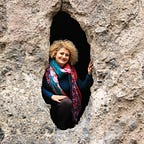What’s perceived intelligence? Tarzan and 10,000 Hour Practice.
Smart? Brainy? Skillful? Knowledgeable? Clever? How do you know you’re intelligent?
Intelligence is a common-place yet controversial, fuzzy notion — one that is sometimes even claimed to be hardwired into the human psyche. There is no lack of definitions of intelligence. People think of it as a human trait, advanced cognitive feature, a mechanism to solve problems — anything but a single mental ability. So what do we mean by intelligence?
The development of “intelligence” as a theoretical concept has been spanning for more than 100 years. In popular discussions, the traditional image of a single type “g” (general) intelligence capitalized on “intellectual intelligence” — a computational (logical-mathematical) genetic excellence mostly measured by (IQ) tests requiring critical and logical thinking.
The development of research in social science, however, has brought to limelight an understanding of human interaction with the environment as a strong determinant of intelligence. Among several factors, home environment and parenting, education, availability of learning resources, culture, nutrition, etc. largely contribute to intelligence.
As a child, my first fictional encounter with the formation of intelligence was through Edgar Rice Burrough’s adventure series telling the story of Tarzan — a white baby boy, who was adopted by apes and raised in full ignorance of his human heritage. Although the only language he could speak at first was the ape language, Rice Burroughs’ wild child taught himself to read once he found the children’s books in his dead parents’ jungle cabin. Furthermore, in course of 24 adventure spanning novels, Tarzan has been portrayed as an articulate and reflective young man with a hereditary title and keen intellectual abilities.
One might question how did Tarzan learn in the wild, with no preconditions or intellectual stimuli? Did he have an affinity for intelligence thanks to his aristocracy roots? No doubt, people are born with certain mental capacities, but how these develop, comes down very much to the environment and the stimulation they are exposed to. Moreover, behaviors recognized as intelligent differ from one environmental context to another.
Among other things, a characteristic Tarzan was born with was resilience and the ability to push himself forward. In response to the changing environment, he evolved and made many generations of young readers believe that the application of intelligence can and should be sought after and acquired.
Modern theories and approaches define intelligence based on the domains of its application or operationalization as opposed to apriori conceptualization. According to Howard Gardner’s theory of multiple intelligences, there are eight different types of intelligence that cover cognitive, linguistic, social, and other areas. Gardner suggests that people are not born with all of the intelligence they will ever have, yet they can actually learn to become better learners, lifelong learners.
Finally, Malcolm Gladwell’s works offer another insightful lens for a more comprehensive view of intelligence. In his famous book “Outliers: The Story of Success”, Gladwell deliberates how cultural differences play a large part in perceived intelligence and what makes two people with exceptional intelligence end up with vastly different results. To be at the top of their game people need to keep the “10,000 Hour Rule” of deliberate practice. Or simply put, practice makes it perfect.
So, to conclude, the vast majority of theories on the nature of intelligence is situated between the most traditional and the most progressive findings of cognitive science on the development of the human brain. But if you ask a child what’s the brain or intelligence for, they will probably explain it with a myriad of “game and play” purposes. For most adults, on the other hand, intelligence is a tool for personal progress or success where the leading role is attributed to the practice/mastery and environment. What unites both age groups is the continuity of the processes underlying intelligence and accelerated learning. The operationalization of intelligence, hence, requires continuous and lifelong learning habits. These views give food for thought in regards to further exploration of the role of intelligence in lifelong learning and the many interfaces between the two.
